Apps Zone
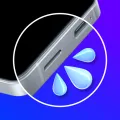
Speaker Cleaner - Remove Water
Understanding the Mechanics Behind Clear Sound and Noise Removal Technologies
The quest for crystal-clear sound reproduction has long been a fundamental challenge within consumer electronics, particularly in mobile devices such as smartphones and portable audio players. Achieving clear sound involves the intricate management of unwanted noise and contaminants that interfere with audio quality. Noise removal technology, especially in the context of physical contaminants like water, dust, and debris within audio hardware, integrates principles of acoustics, signal processing, and mechanical vibration to restore and enhance sound output. In such scenarios, the speaker diaphragm and surrounding components must operate without obstruction to produce undistorted sound waves. When liquids infiltrate speaker grilles or headphone drivers, they dampen vibration, obstructing sound waves and creating muffled or distorted audio. Beyond liquid contamination, particulate matter such as dust and lint can similarly impede the dynamic movement of speaker components. To address this, advanced noise and sound clarity tools utilize specific frequencies that leverage resonance phenomena, whereby audio waves induce targeted vibrations capable of dislodging particles or expelling moisture from confined spaces in the speaker assembly. These frequencies are carefully chosen within audible or ultrasonic ranges, balancing effectiveness and device safety, preventing damage caused by excessive amplitude or frequency ranges. The theoretical foundation lies within the mechanical resonance behavior of speaker membranes and enclosures; by generating signals tuned to resonate with the trapped liquid or debris’s mechanical constraints, the system enables physical expulsion through vibration. Complementing this approach are digital signal processing techniques that filter or suppress residual electronic noise, further enhancing perceived sound quality once physical contaminants are removed. The practical operation of such devices requires managing frequency sweeps that traverse ranges (often from a few hundred Hz up to several kHz), commanding the speaker hardware to oscillate at these prescribed values. Examples include programming a sequence that emits an 8 kHz sine wave or a complex tonal pattern that facilitates differential dislodging of unevenly trapped water molecules. Furthermore, understanding the electroacoustic interplay ensures that continuous exposure to high-frequency signals does not exceed component tolerances or degrade long-term reliability. Therefore, tools dedicated to speaker cleaning integrate both algorithmically generated frequency emissions and optional manual frequency control, empowering users to select optimal settings according to device model and contamination severity. The precision in frequency selection can determine success, especially on devices with varied driver sizes and construction, since resonance points depend on physical geometries. Moreover, advanced implementations include adaptive feedback, where the app listens to the speaker’s output and dynamically adjusts frequencies or durations during cleaning cycles for maximal efficiency and minimal energy consumption. The interplay of physics, audio engineering, and software design culminates in the production of sophisticated clear sound and noise removal utilities, transforming an otherwise inaccessible maintenance task into a user-friendly, automated solution that preserves and prolongs the functional life of mobile audio systems.
Technical Foundations and Implementation Strategies of Water Ejection from Speakers
Water ingress into speaker cavities presents a significant obstacle to maintaining pristine audio playback on modern mobile devices. The accumulation of fluid within speaker grills and enclosures dampens the mechanical oscillations of the diaphragm and attenuates sound waves, leading to muffled audio output or complete loss of sound. Addressing this issue requires a multi-faceted technical approach rooted in the physical dynamics of sound propagation, acoustic impedance, and vibrational energy transfer. At the core, the water ejector function capitalizes on the premise that generated sound waves, when emitted at precise frequencies and amplitudes, can propagate mechanical vibrations sufficient to dislodge water droplets trapped within the speaker unit. This process harnesses the properties of standing waves and resonant frequencies, where sound pressure levels inside the speaker housing reach maxima that exert forces on trapped moisture. By cyclically exciting the speaker components, water droplets can be shifted towards egress points, such as grill perforations, facilitating their expulsion. The engineering challenges revolve around balancing the intensity of these acoustic vibrations to avoid damaging delicate speaker membranes or other internal components. This requires carefully engineered waveforms, often designed as pure sine waves or chirps sweeping across a frequency range, avoiding frequencies that could induce structural stresses. The typical operational range for water ejector sounds spans from 100 Hz up to 8000 Hz or beyond, with the selection contingent upon the physical characteristics of the phone’s speaker enclosure and diaphragm materials. Implementation within software applications employs a robust audio engine capable of generating these precise sound signals. The app must interface seamlessly with the device's audio drivers and speaker hardware, ensuring uninterrupted and accurate reproduction of frequency sweeps or static tones at specified sound pressure levels. Integration of manual frequency selection allows advanced users or technicians to customize the cleaning regimen based on experiential knowledge or diagnostic feedback. Moreover, the app architecture often includes automation capabilities, enabling users to initiate water ejection sequences that run for a predefined duration, often around 80 seconds, deemed sufficient to eliminate moisture in most cases. To provide comprehensive cleaning, the water removal utility sometimes combines ultrasonic or near-ultrasonic tones with audible cues, thereby leveraging multiple vibrational modes that collectively improve efficacy. The success of this method is empirically validated by post-cleaning audio tests, where diagnostic tones emitted by the app confirm the restoration of speaker clarity or highlight residual issues requiring repeat procedures or physical inspection. The inclusion of visual guides within the application further educates users on proper device handling during the water ejection process, emphasizing factors such as device orientation, environmental conditions, and safety precautions. Given the precision and delicacy required, the water ejector method represents an elegant fusion of acoustic physics and software-driven user empowerment, delivering a practical solution to a pervasive problem that previously necessitated specialized hardware servicing or risk of permanent speaker damage.
Advanced Features and User-Controlled Functionality in Noise Removal Applications
In the realm of audio maintenance tools, user empowerment through customizable and automated features is pivotal to addressing diverse contamination scenarios and device models. Modern noise removal applications extend beyond simple once-button clearing utilities by integrating a suite of sophisticated controls, enhancing the potential for efficient audio restoration. One substantial aspect of these tools is the dichotomy between automatic and manual modes for water and dust removal. Automatic cleaning leverages preconfigured sequences of frequency emissions, often optimized through manufacturer data or crowd-sourced experience, enabling rapid, user-friendly operations with minimal input. These sequences ensure broad-spectrum acoustic vibrations that cater to typical contamination patterns in most mobile devices. Conversely, manual cleaning options afford granular control over the frequency range, typically from 0 Hz to 8000 Hz, allowing users to experiment with specific tones to better target unique or stubborn blockages. This flexibility is beneficial for technicians or advanced users who understand the underlying acoustic phenomena and device construction. Moreover, integration of an auto-cleaning shortcut enhances usability by embedding quick access to cleaning routines at the system level, facilitating immediate maintenance without navigating complex menus. Beyond the core water ejection capabilities, these applications extend their scope by incorporating dust removal features, which employ similar vibrational principles to dislodge particulate matter. Dust, often less visible than water but equally detrimental to sound propagation, requires different acoustic excitation as it adheres differently within speaker grill pores and mesh filters. The apps also address external hardware components such as headphones by offering targeted cleaning modes that adapt frequency ranges to the smaller driver sizes and enclosures found in earbuds and over-ear units. This functionality is indispensable for audiophiles and professionals who rely on pristine audio output. Complementing these features is the inclusion of diagnostic sounds and test tones within the app’s functionality. After the cleaning routine, users can play these sounds to verify clarity, confirm the absence of distortion, and assess the speaker or headphone's functional integrity. Often these diagnostic signals include sweeps across audio frequencies or pre-recorded complex waveforms that simulate real-world audio scenarios. Additionally, comprehensive user guides with pictorial instructions are embedded within the app, facilitating user education on optimal cleaning procedures, device handling, and troubleshooting tips. This educational integration bridges the gap between theoretical knowledge and practical application, ensuring users maximize the effectiveness of the tool while minimizing risks of improper use. The synergy of automated ease, manual precision, expanded hardware compatibility, and informative support results in noise removal applications that not only repair but also empower users to maintain high-fidelity audio with confidence and proficiency.
Practical Applications and Real-World Benefits of Speaker Cleaning Technology
The impact of speaker cleaning technology on everyday user experience and device longevity is profound, transcending the domain of mere audio clarity improvement to encompass device maintenance and environmental adaptability. Modern smartphones and portable audio devices are often exposed to adverse conditions, including humidity, accidental liquid exposure, and accumulation of environmental dust and grime. These factors contribute to sound degradation, reducing the enjoyment of music, calls, and media consumption, and in severe cases, disabling critical audio functions. Employing a clear sound and noise removal tool drastically mitigates these detriments by providing end-users with an accessible, non-invasive method for restoring audio performance without disassembling the device or incurring expensive repairs. From a practical perspective, this technology is invaluable in scenarios such as outdoor usage under inclement weather, accidental submersion in water, or exposure to dusty work environments. By facilitating the expulsion of water through targeted acoustic vibrations, users can prevent long-term corrosion or short-circuiting risks inherent in moist environments. Similarly, removal of dust particles restores airflow and vibration range within speaker diaphragms, essential for maintaining tonal accuracy and volume fidelity. These benefits extend into professional contexts as well; audio professionals and technicians leverage these tools for quick diagnostics and repairs, enabling timely restoration with minimal downtime. The cleaning technology also plays a preventative role: routine use deters the buildup of contaminants, preserving speaker sensitivity and reducing the frequency of hardware replacements. This preventative maintenance contributes to sustainable electronics usage by prolonging device lifespan and reducing the environmental footprint associated with discarded or repaired devices. Additionally, the technology enhances safety, as clear sound reception is critical for emergency communication, notifications, and alarms, especially in mobile health or security applications. Technically, these tools integrate seamlessly into the mobile ecosystem, requiring only software installation and minimal user intervention, eliminating barriers associated with traditional physical cleaning methods. The presence of integrated user guides and interactive features allows even non-technical users to engage in maintenance activities confidently and effectively, democratizing device care. Furthermore, the utilization of smart cleaning algorithms that adapt to device-specific acoustics exemplifies state-of-the-art innovation, ensuring optimized performance across diverse hardware configurations. Collectively, these advantages contribute to a holistic enhancement of audio device utility, elevating the functional lifespan and user satisfaction protein, marking a significant advancement in personal electronics maintenance parlance.
Future Prospects and Integration of Clear Sound Technology Across Devices
Looking ahead, the trajectory of clear sound and noise removal technologies is poised for integration into the broader IoT and smart device ecosystem, promising transformative impacts on audio maintenance and user interaction paradigms. Emerging trends indicate ongoing refinement of frequency modulation algorithms and machine learning-driven adaptive cleaning protocols that will tailor cleaning strategies dynamically based on real-time acoustic signatures and environmental sensors integrated within devices. Such intelligent systems will autonomously detect water ingress or dust accumulation, initiate cleaning cycles, and provide predictive maintenance alerts, effectively minimizing user intervention and maximizing device uptime. The proliferation of voice-activated assistants and smart home devices further amplifies the significance of reliable audio output; hence, manufacturers are exploring embedding cleaning functionalities at the firmware level, integrating them natively within operating systems or device control panels. This seamless integration will harmonize hardware and software efforts to maintain audio clarity without relying on third-party applications. Advances in materials science will also complement acoustic cleaning technologies; the development of hydrophobic and oleophobic coatings at the microscopic level will reduce the adhesion of water and dust, enhancing the efficacy of vibration-based cleaning mechanisms. Furthermore, miniaturization trends for wearable and implantable audio devices pose unique challenges and opportunities for clean sound technologies. In such compact devices, traditional physical cleaning is impractical, thus necessitating sophisticated ultrasonic or piezoelectric cleaning techniques that can be precisely controlled to avoid damage. The fusion of acoustic cleaning with haptic feedback and augmented reality interfaces presents innovative user engagement paradigms, where users can visualize contamination levels within device components and initiate targeted cleaning routines proactively. Beyond consumer electronics, these principles are finding relevance in automotive, aerospace, and healthcare sectors where audio fidelity and device hygiene are critical. For example, in automotive infotainment systems, continuous exposure to dust and moisture mandates periodic maintenance facilitated by embedded clear sound technology. Moreover, the expansion into cross-device synchronization allows multi-device ecosystems to monitor and coordinate cleaning processes centrally, delivering unified audio performance improvements across all user gadgets. By embracing interdisciplinary advances spanning acoustics, artificial intelligence, material engineering, and human-computer interaction, the future landscape of clear sound and noise removal tools promises to deliver unprecedented levels of convenience, reliability, and audio purity. This evolution not only elevates daily user experience but also redefines industry standards for device care and longevity, setting the stage for smarter, self-maintaining electronic devices. To begin exploring such capabilities and experience immediate improvements in your device’s auditory performance, one can conveniently Download for Android, harnessing the power of state-of-the-art water and noise removal technology today.
Share Your Opinion
Your Email Will Not Be Published.
All Rights Reserved © Apps Zone 2025
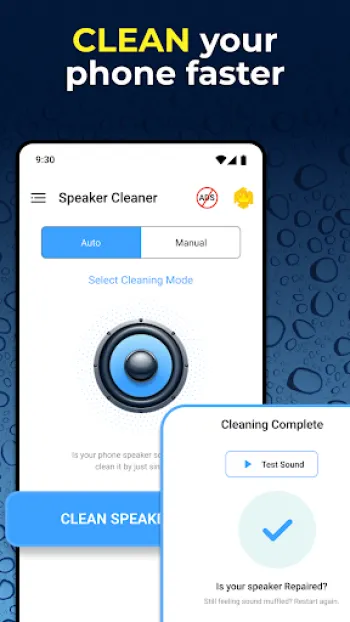
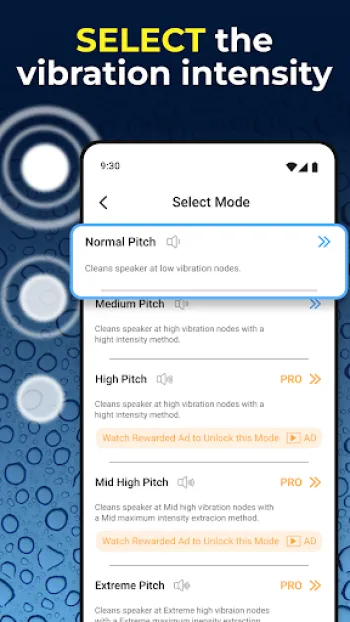
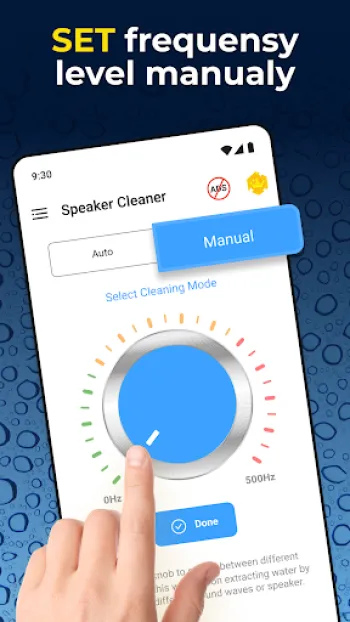
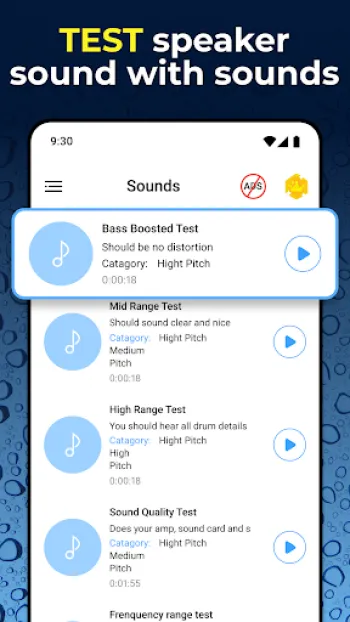
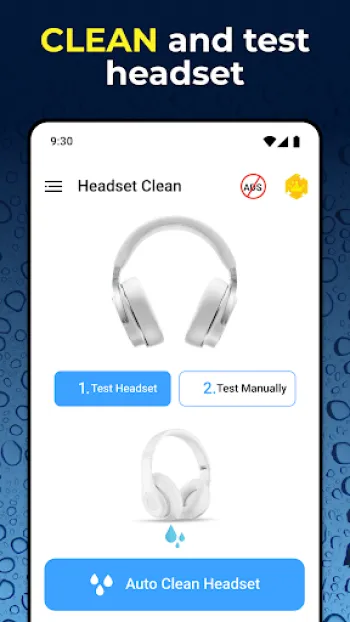
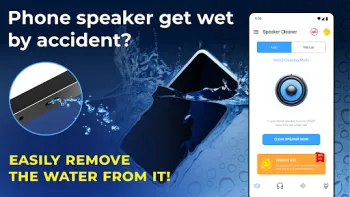
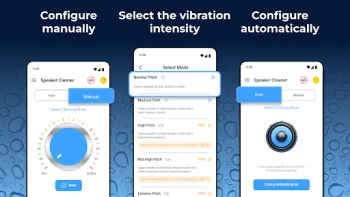
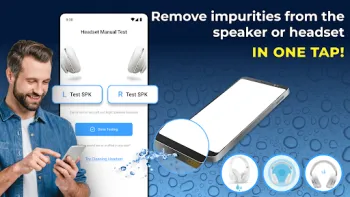
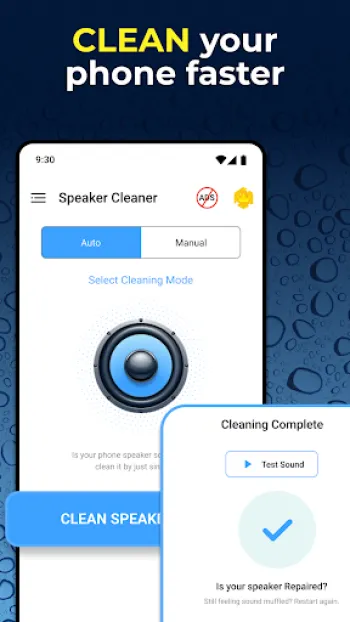
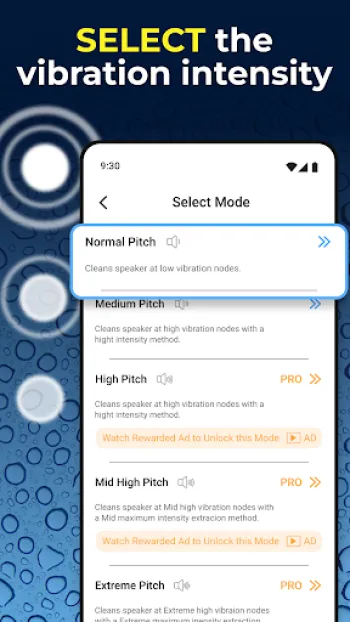
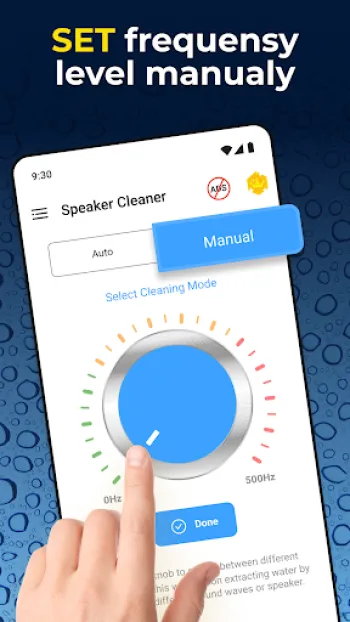
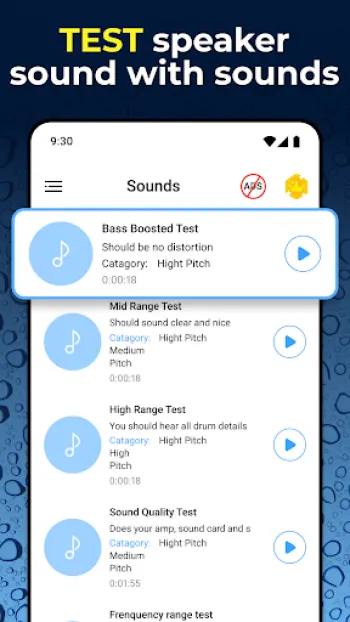

























Aina Pons
It actually works. I used the traditional "turn off the phone and cover it with rice" method with no results, so went online and got these type of ...
Althia sophia Alpas
My speaker on my phone got wet. I tried playing music and it sounds so awful, so blow it hard and try putting it inside the rice. After putting it ...
abdulrasheed ibrahim
best and effective 👍👍👍👍👍👍. I saw the advert of this app but didn't realise it would help me later, I just found myself in a situation where m...
Seamus Parker
I was out in the rain and when i came in my phone audio was off. I read that apps like this can work so i just google searched and picked the first...
Lubabalo Nonkonyana
Crazy stuff...what technology is this??! Thought my speaker was a goner when it got rain droplets innit and was sounding terrible. I found this sea...